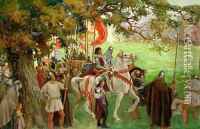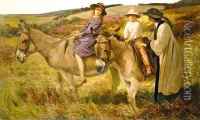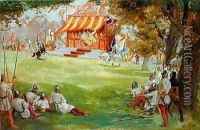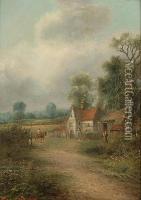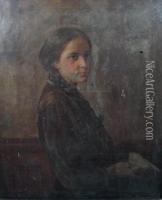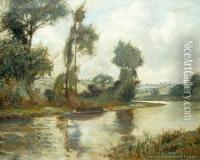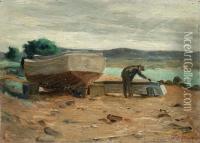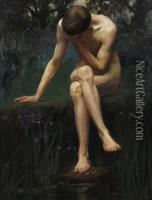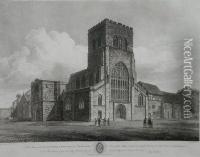George Edmund Butler Paintings
George Edmund Butler, born in 1872 in Bury St Edmunds, England, was a distinguished artist known for his role as an official war artist during World War I. Butler's early life began with his family's move to New Zealand in 1888, where he initially engaged in farming before pursuing his passion for art. He studied art in Sydney, Australia, and later in Paris, France, which significantly influenced his artistic development.
Butler's experience and talent as an artist led him to serve as an official war artist for New Zealand during World War I, a role that had a profound impact on his career and the artistic depiction of war. His work during this time provided a vivid and impactful record of the war, capturing the brutal realities of the battlefield with a poignant and humanistic perspective. His paintings from this period, such as 'The Trenches, St Eloi' and 'Battle of Messines', are particularly noted for their emotional depth and technical skill.
After the war, Butler continued to work and exhibit in Europe and New Zealand, but his war paintings remained his most significant and recognized contributions to art. His works are considered important historical documents, as well as artistic achievements, providing insight into the experiences of soldiers and the landscapes of war.
Butler's legacy is preserved through his contributions to war art and his influence on the genre. His ability to convey the human aspect of war, with all its tragedy and heroism, has left a lasting impression on both art and history. Despite facing the challenges of a post-war world, Butler's work continued to be celebrated until his death in 1936. Today, his paintings can be found in major collections and museums, serving as a testament to his skill, sensitivity, and unique perspective on one of the most tumultuous periods of the 20th century.
